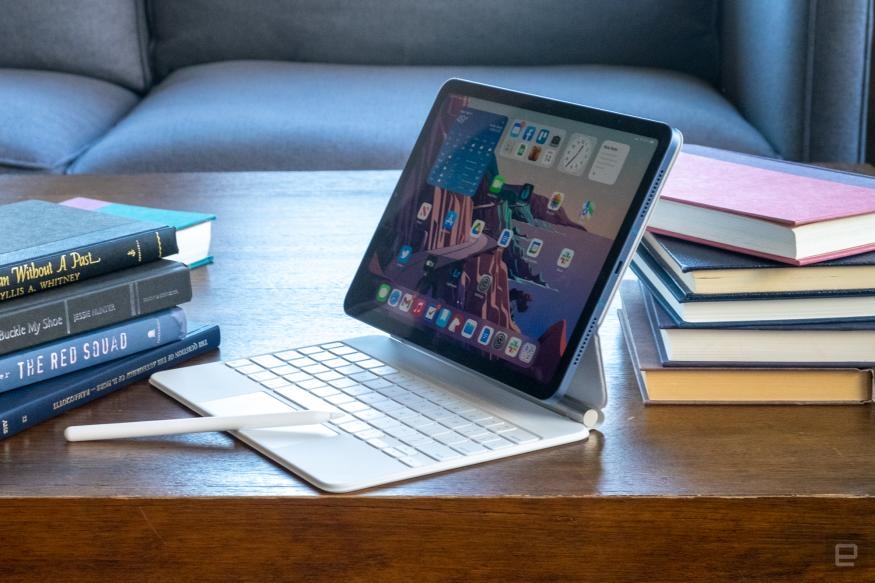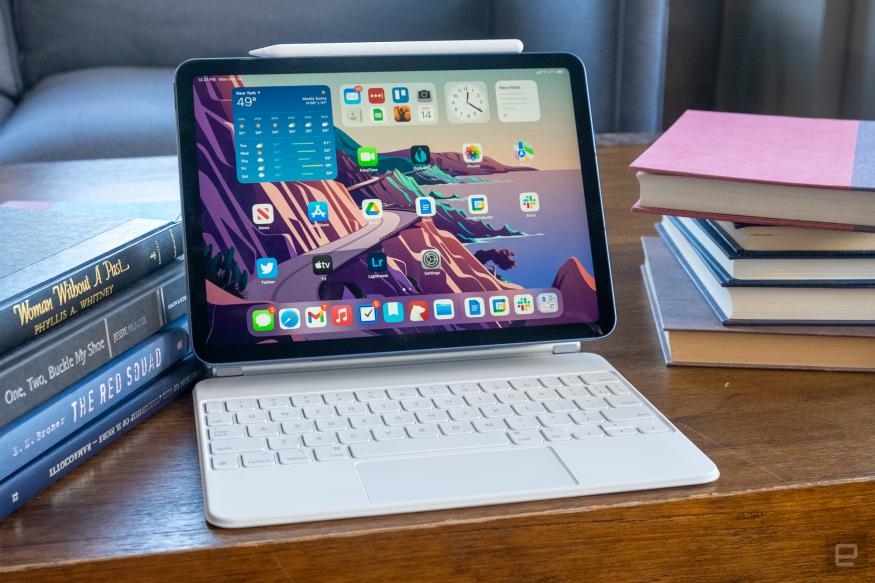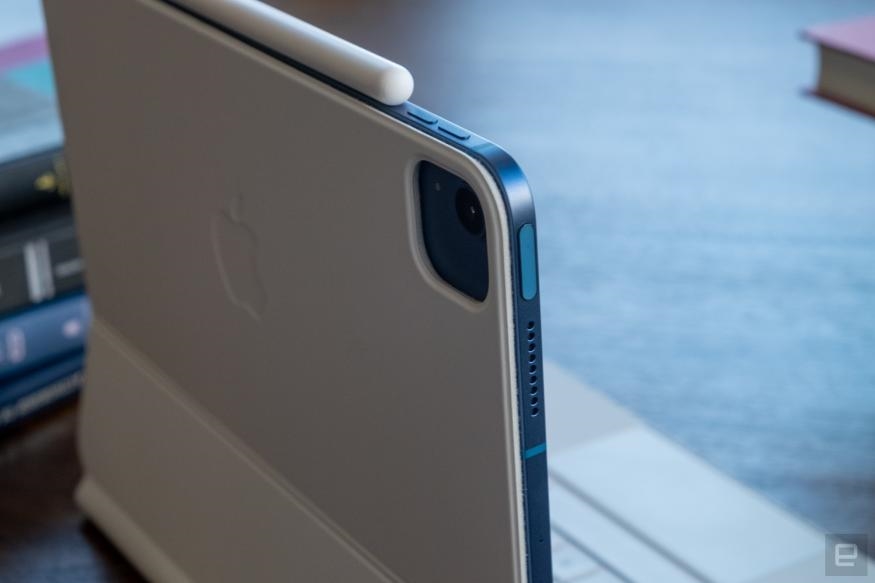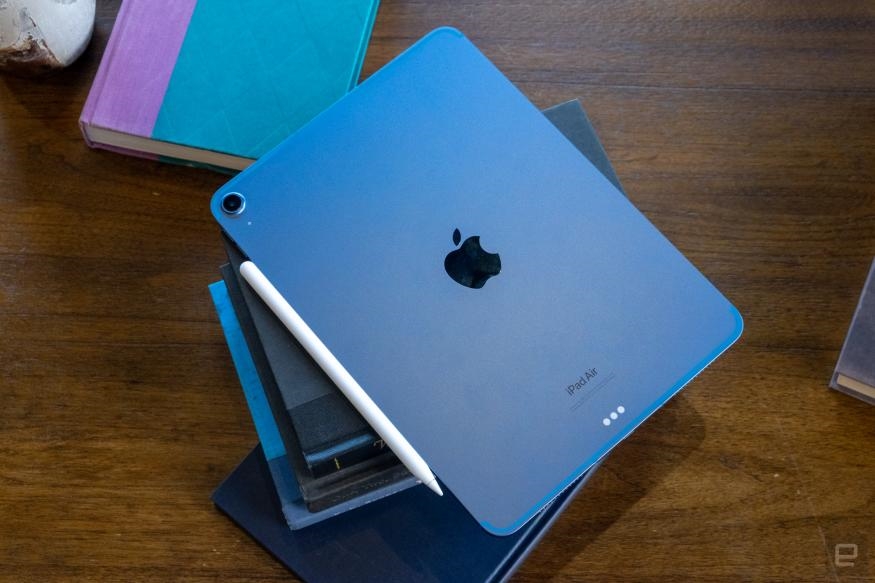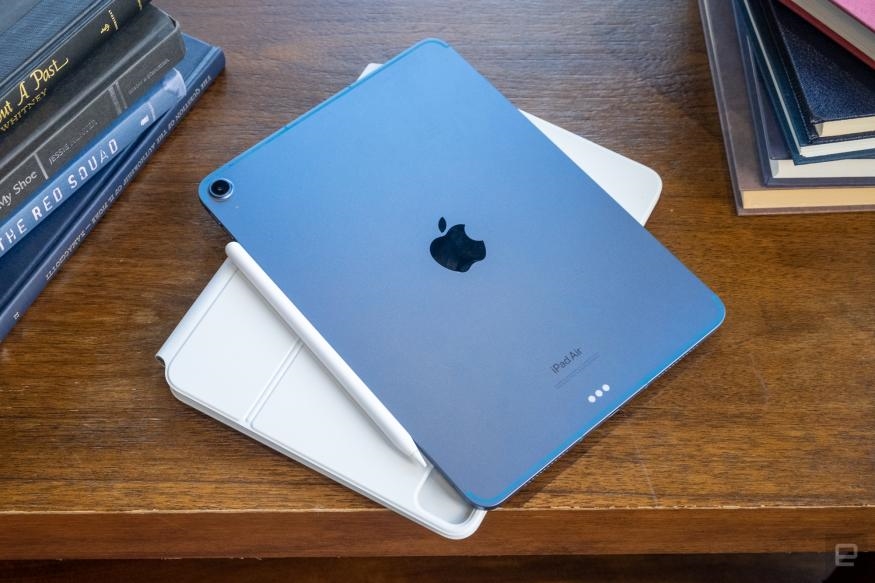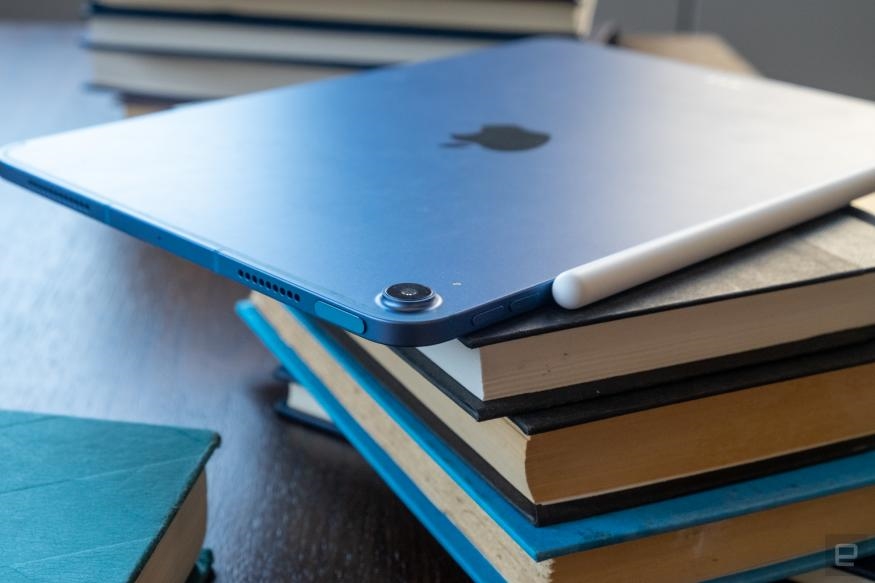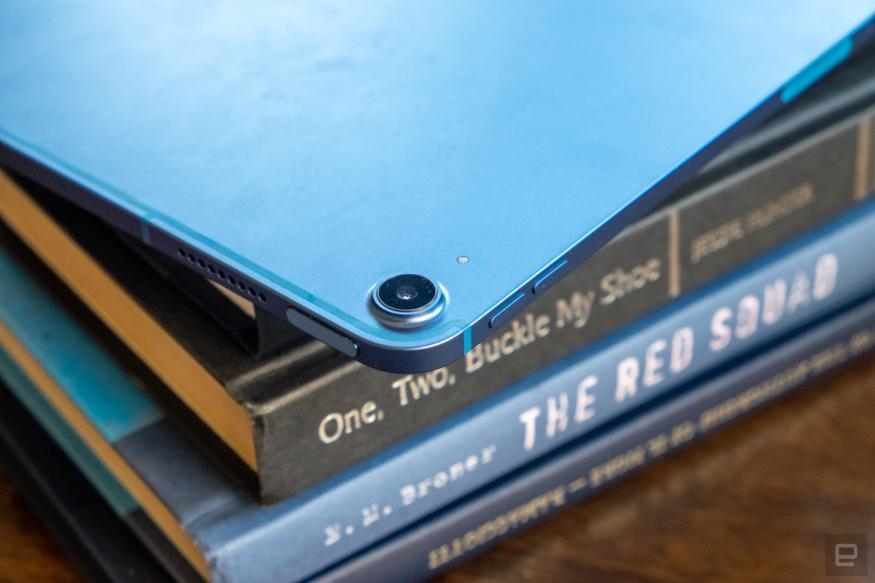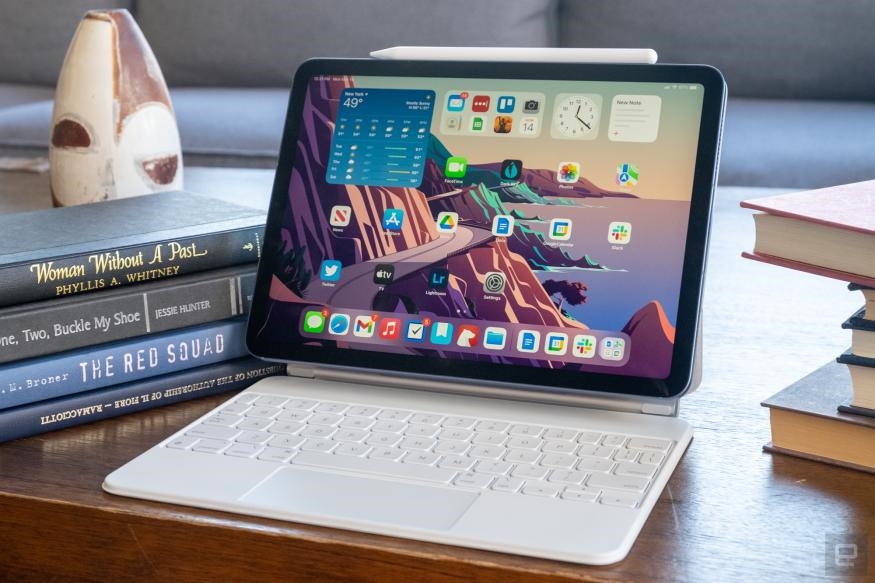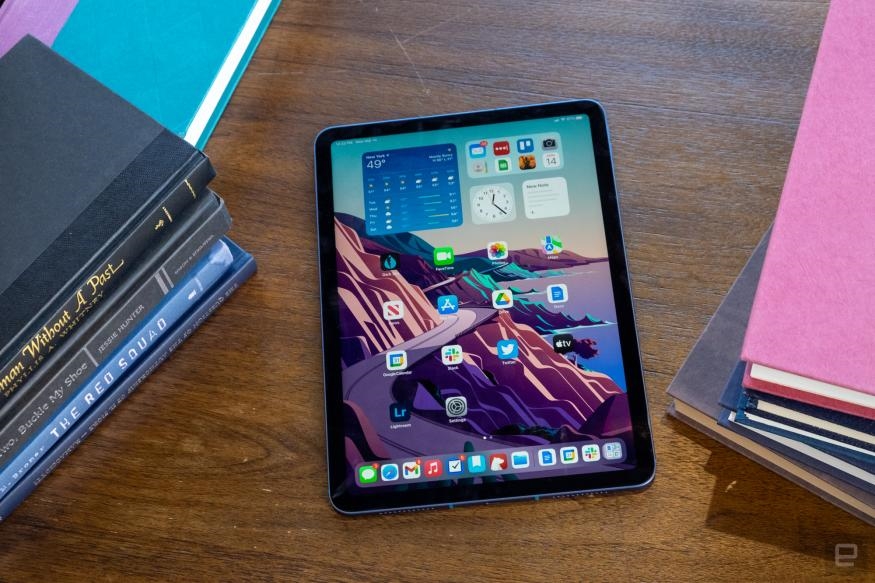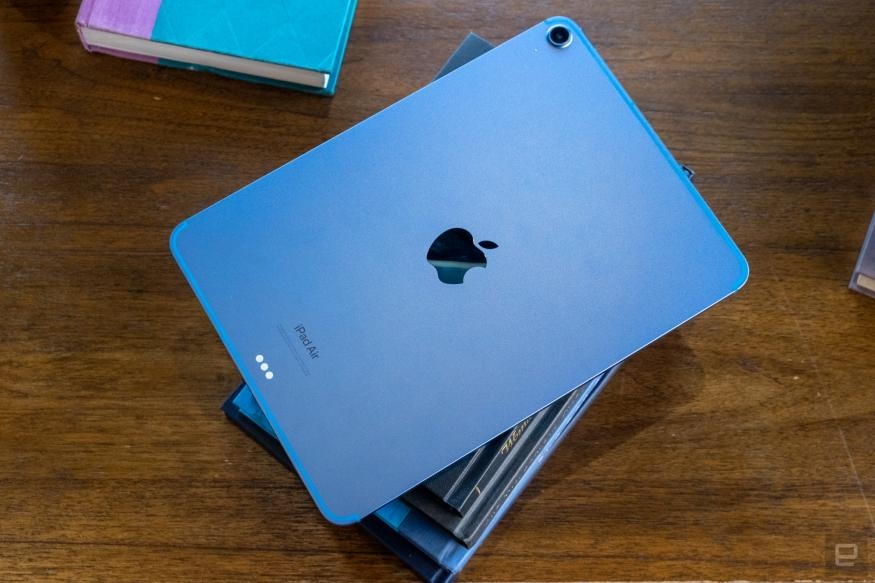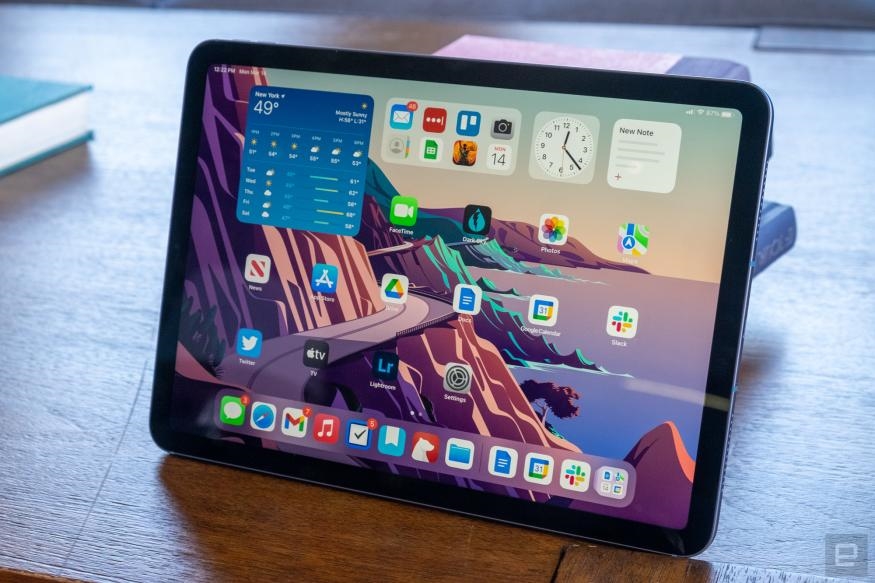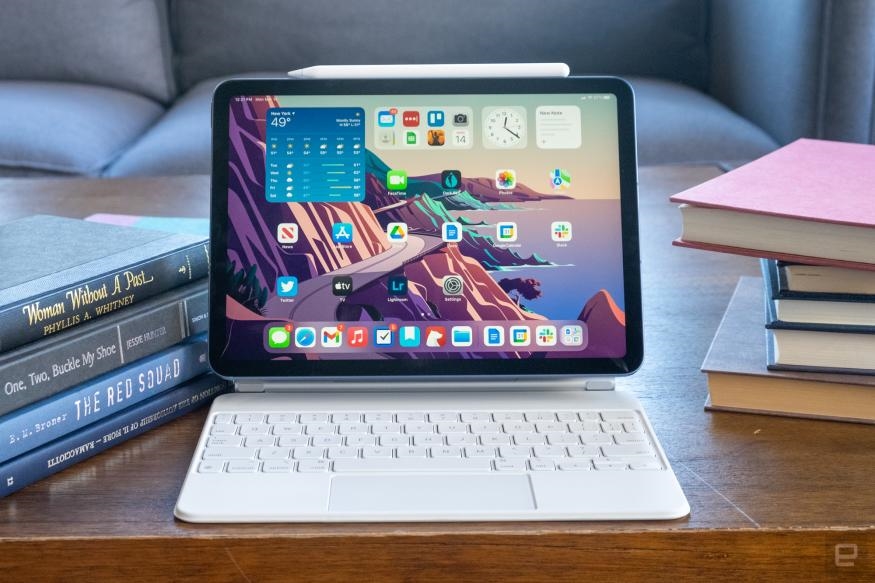Apple’s second-generation Pencil is cheaper than ever

Just a few days before Apple announced the 2022 iPad Air, rumors started swirling that it wouldn’t be powered by the expected A15 Bionic processor that’s in the iPad mini and iPhone 13 lineup. No, it would get an M1, the same chip found in a host of Macs and the iPad Pro, devices that cost a lot more than the iPad Air. At the time, I didn’t put much stock into this rumor; the iPad Air and 11-inch iPad Pro were already extremely similar devices. This would make the gap between them even smaller.
I’ll have to eat crow on this one, as Apple went ahead and put the M1 in the new iPad Air. There are a handful of other little changes here, including a much-improved front-facing camera and 5G connectivity, but the M1 is the real upgrade of note. And while the basic experience of using the Air is mostly the same as it was when we last tested one, having the power of an M1 means this is one of the most future-proof iPads you can buy.
Apple iPad Air (2022)
Pros
- M1 chip makes the iPad Air extremely fast
- Excellent battery life
- Improved front camera
- Design and build quality are still top notch
- Optional 5G is fast when you can get it
Cons
- Base storage of 64GB is pretty stingy
- The optional keyboard and Apple Pencil are expensive
- No Face ID
Gallery: Apple iPad Air (2022) review photos
What’s the same?
The 2020 Air was a total redesign; not so this time. From the outside, the only way anyone will know you’re using the 2022 model is if you have one of the new color options introduced this year. (Apple loaned me a device in a lovely new shade of blue.) Otherwise, it’s exactly the same size and effectively the same weight; Apple’s specs page says it is two hundredths of a pound heavier than the old model, not something anyone would notice. Touch ID is still built into the top button, and it works just fine although I definitely prefer Face ID.
The display is also the same as the last-gen edition, but that’s not a bad thing. It’s a 10.9-inch “liquid Retina” LCD display with Apple’s True Tone feature for optimizing the screen’s color temperature based on ambient light. It’s just perceptibly smaller than the 11-inch screen on my iPad Pro, and the bezel looks a bit chunky, but it doesn’t change the way I use the tablet. It’s clearly not as nice as the mini-LED display on the 12.9-inch iPad Pro, but it’s a far better screen than the one on the basic iPad. The main difference between this display and the one on the 11-inch Pro is the latter has the ability to refresh at up to 120Hz, while the iPad Air is stuck at 60Hz. Although I definitely enjoy using Apple’s “ProMotion” screens, I can’t say I noticed much of a difference once I sat down and started using the Air.
Other things that remain unchanged include the price and storage options. $599 gets you 64GB, and you’ll have to pay another $150 to quadruple that storage to 256GB. I wish that the base model came with 128GB, but Apple has to differentiate the iPad Pro somehow. Sixty-four gigs is enough for most people, but if you want to store a lot of videos and games or plan on doing a lot of creative work with it, you’re probably better off just getting 256GB from the jump. As usual, Apple provided us with a top-of-the-line model, with 256GB of storage and built-in 5G.
The back camera, too, is identical to the one from the 2020 Air. It’s a 12-megapixel shooter with a wide-angle lens and no flash. It produces perfectly fine images, but as usual the camera on your phone is probably better in almost any circumstance. Back cameras on tablets have pretty niche use cases, like scanning documents and trying things in AR, and the Air’s camera is just fine for that, but I wouldn’t let it influence your purchase decision.
Finally, the new Air uses the same accessories as the old model. That means the two first-party keyboard cases Apple offered for the 2020 Air work fine here. Unsurprisingly, the second-generation Apple Pencil that magnetically snaps to the top of the iPad is supported here, too. Meanwhile, the $299 Magic Keyboard remains jaw-droppingly expensive, but it provides a high-quality typing experience for such a compact keyboard. I’ve been happily using it to draft this review and have used it to write plenty of other things in the past. In fact, with the comfortable keyboard and trackpad this accessory offers, I was able to do just about all of my job using the Air. If you’re someone who makes a living writing, it’s a must-have accessory.
The $129 Apple Pencil is an excellent stylus, but I think you really need to know what you’re going to do with it for it to be worthwhile. It’s comfortable to use and extremely responsive, but unless you really want to take handwritten notes with your iPad or have serious visual arts chops, it’s inessential. But there are loads of wonderful drawing and note-taking apps available for the iPad, so if you are an artist, it’s an excellent tool.
The M1 comes to the Air
Enough about what’s old, though. Let’s get into what’s new here: Apple had the audacity to throw the M1 into the humble iPad Air, a year after putting it in the iPad Pro. This chip also powers machines like the MacBook Air, iMac, Mac mini and 13-inch MacBook Pro. So on the one hand, Apple probably has the manufacturing process down such that getting the chip into the iPad Air wasn’t a major stretch.
On the other hand, this is the kind of flex Apple likes to make with the iPad from time to time. The iPad has very little real competition, and yet Apple just significantly increased the Air’s processing power to an even more impressive level, particularly for this price range.
To drive it home: I ran Geekbench 5 on my iPad Pro, a model that was released about two years ago. It has an A12Z Bionic chip, one that’s only slightly different from the A12X chip used in the 2018 iPad Pro. The M1 in the new Air is significantly faster at both single- and multi-core tasks. The new iPad Air scored 1,706 on the single-core test and 6,966 on the multi-core test. My iPad Pro, meanwhile, only scored 1,113 and 4,149, respectively. This is a testament to how fast Apple has been improving its own chips, because even the A14 in the 2020 Air was a little faster than the chip in my iPad Pro.
What does this mean in practice? The answer depends on what you plan to do with the device. Personally, I use my iPad for writing, web browsing, email and to-do lists, chatting in apps like Messages and Slack, modest photo editing in Adobe Lightroom, playing music and video, and a bit of gaming. None of this taxed the M1 chip in the least — but while the Air beats my iPad Pro in benchmarks, the actual experience of using it isn’t really that different.
That’s more a reflection of my workflow than the power of the iPad Air. The M1 is an incredibly powerful chip for a $599 tablet, and it means that the Air should remain responsive and run whatever apps you want to throw at it for years to come. Or, if you’re the kind of person who plans to do more advanced tasks like editing and exporting video or making music, the Air should more than stand up to your ambitions.
Even with my moderately intense workflow, using an iPad with the M1 chip was a great experience. The Air made short work of any app I tried, including recent Apple Arcade games like NBA 2K22 and Shadow Blade+. I edited a host of RAW photos in Lightroom, and changes were applied almost instantly. I also noticed speedy improvements in more basic tasks where I didn’t necessarily expect it. The Apple Mail app was much faster at deleting all the junk email I get than it is on my iPad Pro, and Safari was quicker to render sites and switch between tabs. Loading different apps into multitasking views like Split View and Slide Over was similarly speedy.
Battery life on the Air is just as good with the M1 chip as it was before. Apple typically always claims any iPad will last about 10 hours, and in this case I think the company undersold the Air’s longevity. In my normal routine, I got close to 12 hours of use before needing to charge the Air, though your mileage will vary depending on what you’re doing. Games took a bigger toll on the battery, but the Air lasted a long time while watching movies. I looped a downloaded movie in the Apple TV app for four hours and the battery only dropped to 75 percent.
What else is new?
While the M1 chip is the major update here, there are a few other new things to consider. Unsurprisingly, the iPad Air’s front camera has been upgraded to match the one found in the rest of the iPad lineup. It’s a 12-megapixel ultra wide angle camera that isn’t really designed to be used at its full resolution. Instead, it enables Apple’s “Center Stage” feature, which lets the camera zoom in around the subject and continuously move to keep that person (or people) in the middle of the screen. I feel like most people don’t move around a ton when they’re on video calls, but it’s a handy feature nonetheless.
While the camera is definitely better than on the prior iPad Air, it’s still on the left side of the screen when you use the iPad in landscape mode. Having it up top is fine when you’re holding the iPad in portrait orientation, but it’s definitely awkward if you are doing a video call with the tablet attached to the keyboard.
Optional 5G is another unsurprising addition, given that last fall’s iPad mini and the iPad Pro all have it as well. (The entry-level iPad remains stuck with LTE.) This is a logical update that doesn’t change the experience of using the iPad very much. Most people will probably opt to save the $150 and simply get a WiFi-only iPad Air.
Those who get the upgrade, will surely appreciate having 5G as time goes by. Depending on what network you choose and where you live, 5G coverage can still be pretty hit or miss. And I ran a few different speed tests on the iPad Air while running it on Verizon’s network and actually got faster speeds from LTE than 5G. It’s also worth noting that the Air doesn’t support the mmWave 5G networks, like Verizon’s Ultra Wideband network. Those faster networks are only supported on the iPad Pro.
Those caveats aside, there’s no doubt that wireless carriers will increase the availability of 5G networks, so having it on board here is another good piece of future-proofing, much like the M1 chip. That said, it’s not a reason to upgrade your iPad now.
Finally, the iPad Air has USB-C connectivity that Apple says is twice as fast as its predecessor, with data transfer speeds up to 10Gbps supported. The old USB-C connector was already fast, but faster is always better, right? I didn’t do any precision testing, but the iPad Air pulled RAW photos off my SD card extremely quickly.
Should you buy it?
By now, you probably have the gist of this review: The new iPad Air is a modest upgrade over the previous generation. That’s true, but it’s also damning the Air with faint praise. To be clear, it’s an excellent tablet. It’s extremely fast, has a lovely screen, runs a massive ecosystem of quality apps and will be a capable device for years to come. If I sound unenthusiastic, it’s because this was always true.
It was definitely time for Apple to update the iPad Air, but the company got so much right with the 2020 edition that this new device is a logical improvement to a formula that was already working. As such, anyone who bought the 2020 Air or one of the last few iPad Pros won’t find a ton new or different here. But compared to the 2019 Air, or any base-level iPad from the last few years, the new model is a massive upgrade.
Overall, I think the iPad Air is the best iPad for most people: It’s significantly better than the basic $329 iPad and is nearly identical to the 11-inch iPad Pro that costs $200 more than the Air. If you want a bigger or smaller screen, the iPad mini and 12.9-inch iPad Pro are still great options. But for anyone who wants a premium tablet that’s about as future proof as it gets, the iPad Air is the way to go.
(10)


